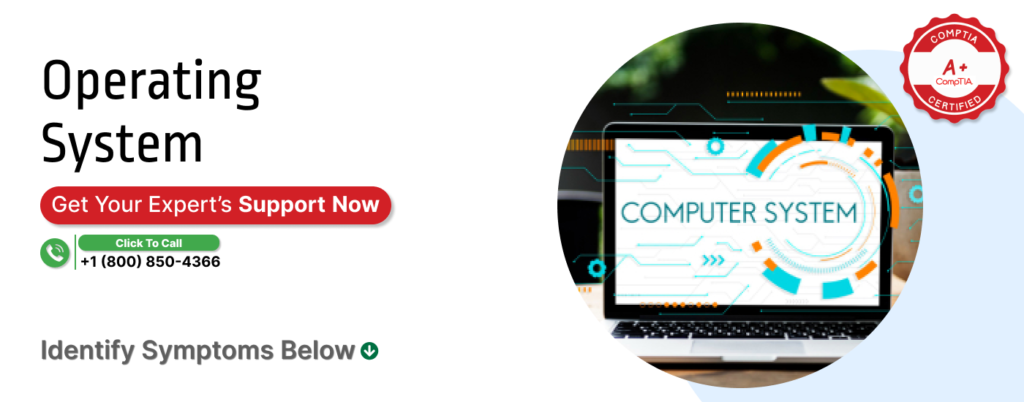What is software installation on a computer?
Software installation is the process of setting up a program on your computer. While some installations require expertise, others are as easy as using a wizard. There are different types, such as Windows Installer, web-based, and single exe installations. It’s a mix of expert-level and straightforward tasks!
What is software troubleshooting?
Software troubleshooting involves scanning, identifying, diagnosing, and resolving problems, errors, and bugs in software.
It’s a systematic process aimed at filtering out and resolving issues to restore normal software operation. It falls under the category of IT troubleshooting. Typically, software troubleshooting is done to resolve technical or source-code-related problems in software, whether functional or non-functional. The process starts with identifying the problem, exploring potential causes, and then working on solutions and alternatives. Issues are usually addressed by software developers or testers who review and optimize software, eliminating bugs and errors from the source code. Software vendors also assist in troubleshooting by releasing updates or patches to ensure smooth software operation. Troubleshooting may also involve correctly configuring software, resolving issues from incorrect installation, or restoring software after corruption or file deletion caused by a virus. Our experienced technicians specialize in seamless software installations, ensuring your desktop or laptop has the latest and most relevant applications. Whether it’s essential programs or complex configurations, we’ve got you covered. In case of software-related issues, our troubleshooting services ensure quick resolution, minimizing disruptions to your workflow.
Hardware Care and Maintenance:
When aiming to boost your computer’s efficiency, don’t overlook the importance of maintaining its hardware. Instead of rushing to buy new parts or a whole new device when you encounter errors or malfunctioning hardware, there are simple steps you can take to immediately improve performance.
Hardware maintenance involves inspecting, enhancing, and looking after a computer’s physical components to ensure they function optimally. This includes taking care of essential parts like the monitor, keyboard, CPU, motherboard, hard disk drive, optical drive, mouse, RAM, speakers, graphics card, sound card, fans, printer, and even the power button.
What does computer maintenance entail? Here’s a breakdown:
– Monitor: Check for any issues with display quality or connectivity.
– Keyboard: Ensure all keys are working correctly and clean any debris.
– CPU: Monitor the processor’s temperature and clean the fan and heatsink.
– Motherboard: Inspect for any visible damage or loose connections.
– Hard Disk Drive: Check for proper functionality and free up space if needed.
– Optical Drive: Test for proper disc reading and clean if necessary.
– Mouse: Ensure smooth movement and clean the sensor area.
– RAM: Confirm modules are securely seated and functioning properly.
– Speakers: Test for sound quality and ensure proper connections.
– Graphics Card: Check for visual glitches or overheating.
– Sound Card: Test audio output and connections.
– Fans: Ensure they’re spinning properly and free of dust.
– Printer: Test printing functionality and ensure ink levels are adequate.
– Power Button: Ensure it powers the computer on and off smoothly.
By regularly maintaining your computer’s hardware, you can extend its lifespan and prevent major issues. Our expert hardware care and maintenance services offer routine check-ups to identify and address potential problems, ensuring your desktops and laptops stay healthy and functional for longer.
-
Operating System Optimization:
Enhancing your computer’s operating system (OS) to make it better, safer, and more reliable is known as OS optimization. This involves tweaking settings, cleaning up unnecessary files, updating drivers, and applying patches to address any issues. Think of it as giving your computer a tune-up to boost its performance.
Unlock the full potential of your desktops and laptops with our operating system optimization services. Our experts specialize in upgrading your system to the latest OS or fine-tuning your current setup for optimal performance. Enjoy a seamless and efficient user experience as we customize your operating system to meet your specific needs.
How to optimize?
Adjusting system settings is crucial to tailor them to your preferences, such as disabling unnecessary features or customizing your desktop’s appearance. Performing disk cleanup is essential to remove temporary or duplicate files from your hard drive, freeing up valuable space and preventing system slowdowns. This can be done using built-in tools, third-party software, or manual deletion.
Keeping your drivers up-to-date is equally important to ensure your hardware devices are functioning optimally. You can streamline this process by regularly checking for updates, using automatic update features, or downloading drivers from the manufacturer’s website.
Installing patches is essential for implementing fixes or enhancements to your operating system and applications, improving performance, security, and functionality. You can optimize this by enabling automatic updates, manually checking for updates, or downloading patches from official sources.
At PC MacWin, we’re dedicated to not just fixing problems but also empowering your devices for peak performance. Our team of professionals delivers personalized solutions tailored to your desktop and laptop environment. Explore our comprehensive services and let PC MacWin enhance your computing experience.
Imagine a computer network as a bustling group of friends chatting and sharing things with each other. They use cables or wireless connections to connect and swap stuff. Connecting two laptops with a cable? That’s a small computer network. But the internet? It’s like a massive gang of computer networks worldwide, enabling everyone to share and communicate.
How do computer networks work?
Devices on a computer network use IP addresses, converted into hostnames through a domain name system server, to communicate over the internet and other networks. Various protocols and algorithms manage data transmission between endpoints.
For a network to function smoothly, it must adhere to specific standards or guidelines. These standards, set by organizations like IEEE and ISO, govern data communication for information exchange between devices. For example, the Ethernet standard establishes communication rules for wired networks, while the 802.11 standard outlines connectivity for wireless LANs.
Now, let’s break down Basic Network Connectivity.
- Wired Connectivity: The trusty old method. It uses physical cables like Ethernet or fiber optics for data transmission. It’s reliable and lightning-fast, perfect for tasks requiring stable and speedy connections.
- Wireless Connectivity: No more tangled wires! Thanks to Wi-Fi and cellular networks, wireless is the new trend. Wi-Fi lets us surf the internet without cables within a certain range, while cellular keeps us connected on the go, even in remote areas.
Network connectivity is a hero, but it faces challenges like signal interference, congestion, and security threats. But fear not! Technology comes to the rescue with mesh networks, signal boosters, and encryption protocols, ensuring our connectivity remains strong.
Two common computer network architectures:
- Client-server: Multiple clients exist, with at least one serving as the central server. Clients request resources from the server, which houses them all.
- Peer-to-peer (P2P): Each connected device acts as both a client and a server, sharing resources across the network. Many companies use this for memory-intensive applications across multiple devices.
Data Backup and Recovery:
Understanding the Difference:
Backup and recovery play vital roles in data management, but they serve different purposes. Backup focuses on preserving and securing data, creating copies for future use. Recovery, on the other hand, involves restoring backed-up data to its original state when needed, minimizing downtime and maintaining system functionality.
Types of Backups:
- Full Backups: These comprehensive backups transfer all data from a production system to a backup system, ensuring complete protection.
- Incremental Backups: Capturing only new data since the last full backup, incremental backups save time and storage space.
- Differential Backups: Similar to incremental backups, differential backups identify changes since the last full backup, providing another layer of data protection.
Exploring Data Recovery Options:
- Granular Recovery: Allows for the retrieval of specific files or folders from a larger dataset, saving time and effort.
- Instant Mass Restore: Enables the quick recovery of multiple virtual machines, scaling back in time efficiently.
- Volume Recovery: Recovers entire groups of virtual machines simultaneously, ensuring speedy restoration.
- Virtual Machine Disk (VMDK) Recovery: Swiftly restores data and applications on virtual machines.
- Bare Machine Recovery: Reboots an entire operating system, software, and data in one go, offering a fresh start.
- Instant Volume Mounts: Instantly revives a whole volume on a Windows VM, providing immediate access to data.
- Instant Restores of VMs: Allows for the quick restoration of virtual machines to previous states, like hitting an “undo” button.
Ensuring Data Security and Recovery:
At PC MacWin, we understand the critical importance of data for businesses and individuals alike. Our comprehensive data backup and recovery services act as a safety net, providing customized solutions to protect your valuable information and offering quick recovery options in case of unexpected events. Trust us to safeguard your data under all circumstances and ensure its security and integrity.
Virus and Malware Protection:
A computer virus is a harmful piece of code designed to spread from one device to another. Belonging to the malware category, these malicious threats usually aim to damage a device or steal data.
Think of it like a biological virus causing illness. Just as persistent and disruptive, a computer virus can hinder normal operation, often requiring strong measures to remove it. Like a biological virus, a computer virus is built to replicate endlessly, infiltrating your programs and files, disrupting your computer’s normal function or even making it unusable.
What can a virus do to your computer?
Some viruses can harm your computer by corrupting programs, deleting files, or wiping the hard drive. Others focus on replicating or flooding a network with excessive traffic, making internet activity impossible. Even seemingly harmless viruses can significantly disrupt your system’s performance, causing memory depletion and frequent crashes.
How does a computer get infected with a virus?
Despite caution, exposure to viruses can happen through everyday web activities such as:
– Sharing music, files, or photos with others
– Visiting compromised websites
– Opening spam emails or attachments
– Downloading free games, toolbars, media players, and other utilities
– Installing software without thoroughly reviewing license agreements
How do viruses spread?
Viruses can spread through networks, discs, email attachments, or external storage devices like USB sticks. While early viruses spread through infected floppy disks due to limited device connections, today’s internet-connected devices offer ample opportunities for virus transmission. According to the U.S. Cybersecurity and Infrastructure Security Agency, infected email attachments are currently the most common method for spreading viruses. While not all viruses require user action, many do, such as enabling “macros” or clicking on a link.
What are the signs of a virus?
If you notice any of these symptoms, your computer may be infected:
– Slow computer performance
– Strange behavior
– Unexplained data loss
– Frequent crashes
In today’s world of increasing cyber threats, protecting your digital assets is crucial. Our robust virus and malware protection services ensure your desktops and laptops are shielded against online threats. We employ advanced security measures to create a safe environment for your data and sensitive information.









